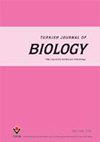Characterization of mesenchymal stem cells in mucolipidosis type II (I-cell disease)
IF 0.9
4区 生物学
Q3 BIOLOGY
引用次数: 3
Abstract
Mucolipidosis type II (ML-II, I-cell disease) is a fatal inherited lysosomal storage disease caused by a deficiency of the enzyme N-acetylglucosamine-1-phosphotransferase. A characteristic skeletal phenotype is one of the many clinical manifestations of ML-II. Since the mechanisms underlying these skeletal defects in ML-II are not completely understood, we hypothesized that a defect in osteogenic differentiation of ML-II bone marrow mesenchymal stem cells (BM-MSCs) might be responsible for this skeletal phenotype. Here, we assessed and characterized the cellular phenotype of BM-MSCs from a ML-II patient before (BBMT) and after BM transplantation (ABMT), and we compared the results with BM-MSCs from a carrier and a healthy donor. Morphologically, we did not observe differences in ML-II BBMT and ABMT or carrier MSCs in terms of size or granularity. Osteogenic differentiation was not markedly affected by disease or carrier status. Adipogenic differentiation was increased in BBMT ML-II MSCs, but chondrogenic differentiation was decreased in both BBMT and ABMT ML-II MSCs. Immunophenotypically no significant differences were observed between the samples. Interestingly, the proliferative capacity of BBMT and ABMT ML-II MSCs was increased in comparison to MSCs from age-matched healthy donors. These data suggest that MSCs are not likely to cause the skeletal phenotype observed in ML-II, but they may contribute to the pathogenesis of ML-II as a result of lysosomal storage-induced pathology.II型粘脂病(i细胞病)中间充质干细胞的表征
II型粘脂病(ML-II,I细胞病)是一种致命的遗传性溶酶体储存病,由N-乙酰葡糖胺-1-磷酸转移酶缺乏引起。特征性骨骼表型是ML-II的许多临床表现之一。由于ML-II中这些骨骼缺陷的机制尚不完全清楚,我们假设ML-II骨髓间充质干细胞(BM-MSCs)的成骨分化缺陷可能是这种骨骼表型的原因。在这里,我们评估并表征了来自ML-II患者的骨髓间充质干细胞在骨髓移植前(BBMT)和移植后(ABMT)的细胞表型,并将结果与来自载体和健康供体的骨髓间质干细胞进行了比较。形态学上,我们没有观察到ML-II BBMT和ABMT或载体MSC在大小或粒度方面的差异。成骨分化不受疾病或携带者状态的显著影响。BBMT和ABMT ML-II MSCs的脂肪分化增加,但软骨分化降低。免疫表型通常在样品之间没有观察到显著差异。有趣的是,与来自年龄匹配的健康供体的MSCs相比,BBMT和ABMT ML-II MSCs的增殖能力增加。这些数据表明,MSCs不太可能导致在ML-II中观察到的骨骼表型,但由于溶酶体储存诱导的病理学,它们可能有助于ML-II的发病机制。
本文章由计算机程序翻译,如有差异,请以英文原文为准。
求助全文
约1分钟内获得全文
求助全文
来源期刊

Turkish Journal of Biology
BIOLOGY-
CiteScore
4.60
自引率
0.00%
发文量
20
审稿时长
6-12 weeks
期刊介绍:
The Turkish Journal of Biology is published electronically 6 times a year by the Scientific and Technological
Research Council of Turkey (TÜBİTAK) and accepts English-language manuscripts concerning all kinds of biological
processes including biochemistry and biosynthesis, physiology and metabolism, molecular genetics, molecular biology,
genomics, proteomics, molecular farming, biotechnology/genetic transformation, nanobiotechnology, bioinformatics
and systems biology, cell and developmental biology, stem cell biology, and reproductive biology. Contribution is open
to researchers of all nationalities.
 求助内容:
求助内容: 应助结果提醒方式:
应助结果提醒方式:


